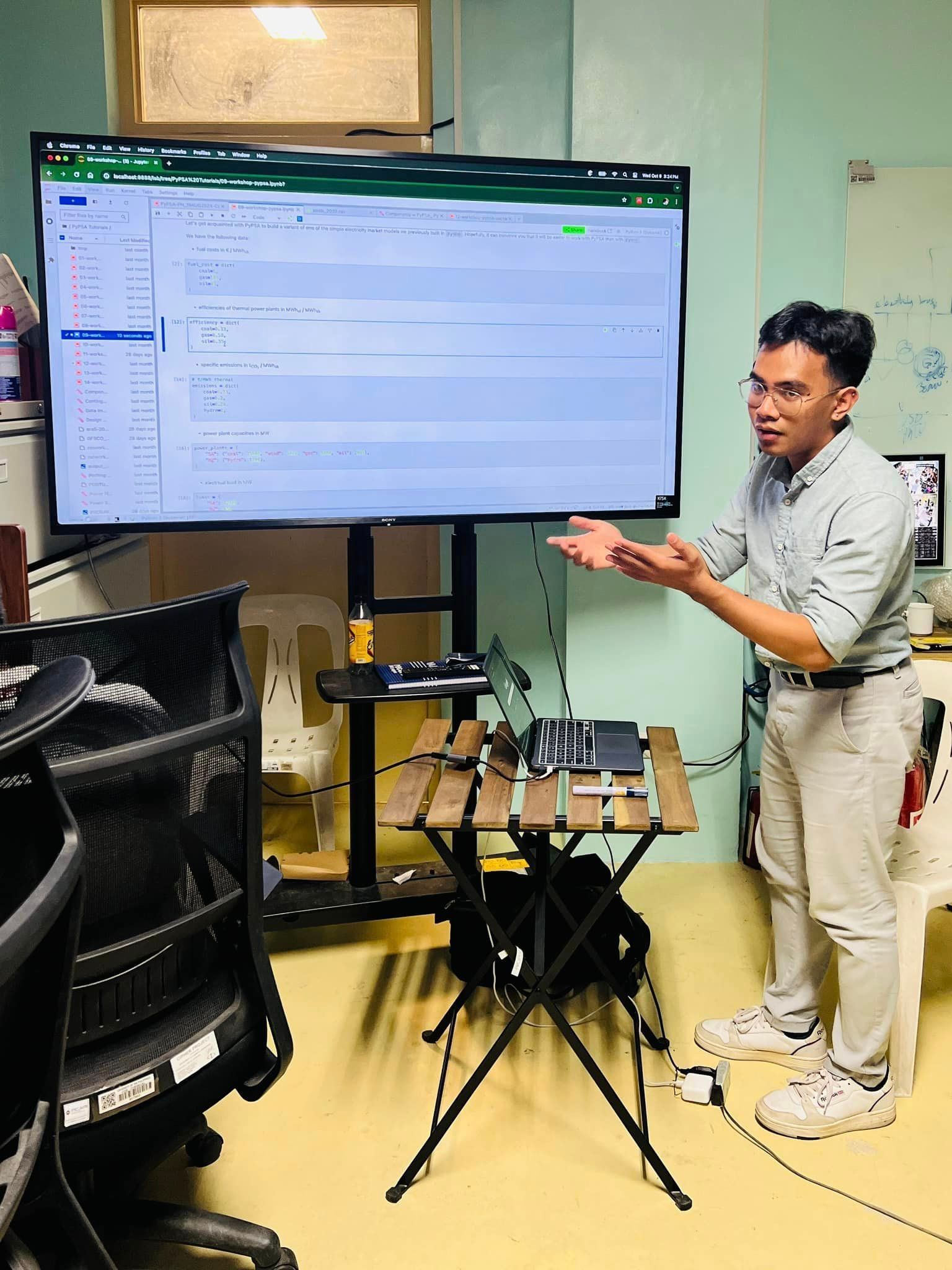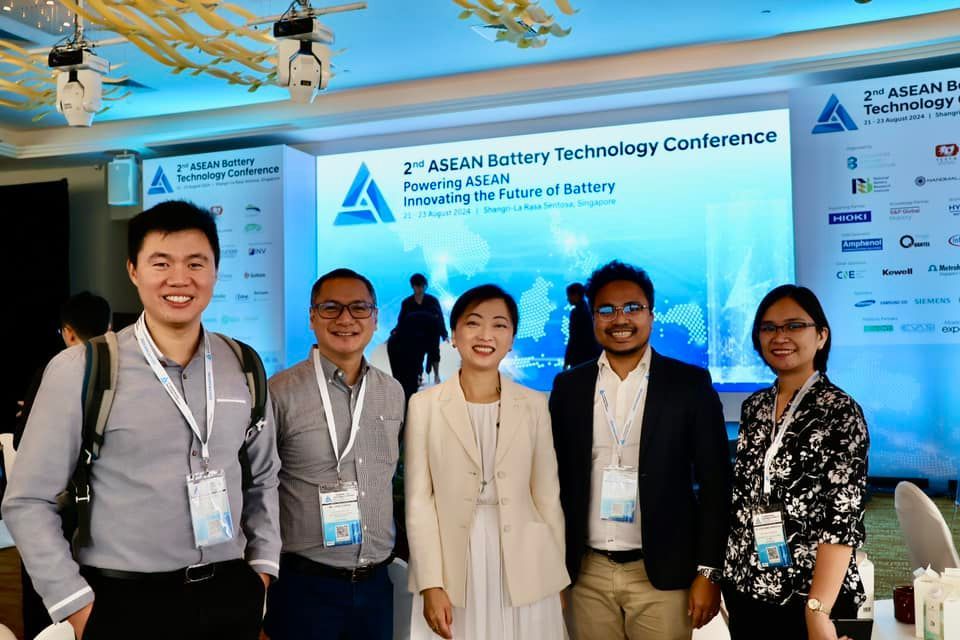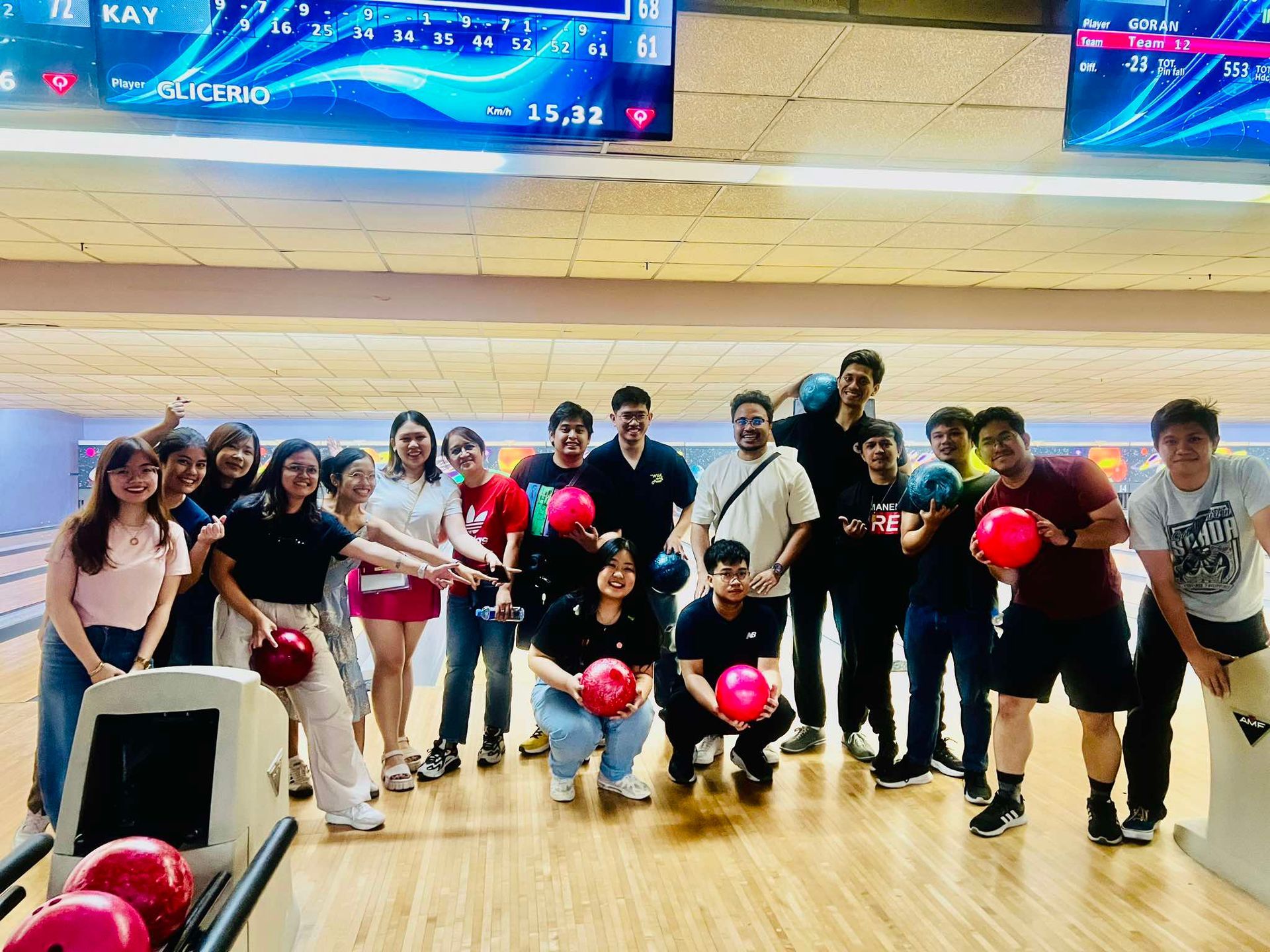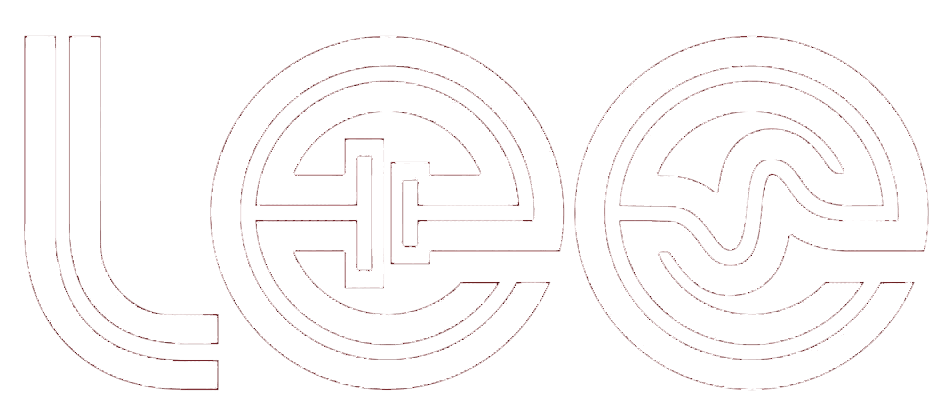Engr. Castro and Prof. Ocon publishes Journal of Energy Storage paper
August 13, 2022

Engr. Castro and Prof. Ocon published an article in the Journal of Energy Storage titled, “𝗗𝗲𝘃𝗲𝗹𝗼𝗽𝗺𝗲𝗻𝘁 𝗼𝗳 𝗰𝗵𝗲𝗺𝗶𝘀𝘁𝗿𝘆-𝘀𝗽𝗲𝗰𝗶𝗳𝗶𝗰 𝗯𝗮𝘁𝘁𝗲𝗿𝘆 𝗲𝗻𝗲𝗿𝗴𝘆 𝘀𝘁𝗼𝗿𝗮𝗴𝗲 𝘀𝘆𝘀𝘁𝗲𝗺 𝗺𝗼𝗱𝗲𝗹𝘀 𝘂𝘀𝗶𝗻𝗴 𝗰𝗼𝗺𝗯𝗶𝗻𝗲𝗱 𝗺𝘂𝗹𝘁𝗶𝗽𝗵𝘆𝘀𝗶𝗰𝘀 𝗮𝗻𝗱 𝗿𝗲𝗱𝘂𝗰𝗲𝗱 𝗼𝗿𝗱𝗲𝗿 𝗺𝗼𝗱𝗲𝗹𝗶𝗻𝗴.”
Microgrids are electric grids that can function independently of the main power grid. Some examples of microgrids are power lines in schools, hospitals, corporate compounds, or remote locations like islands. In most renewable energy-based microgrids, electricity can be irregular or fluctuating. This is why batteries are essential in handling this intermittent nature of renewable energy technologies.
Different energy systems modeling tools are used to analyze the techno-economic feasibility of deploying batteries in microgrids. One of the most frequently used and more straightforward tools is the idealized battery model. However, it does not model the electrochemical reactions that are ongoing inside the battery.
This paper then proposes a new methodology and combines multiphysics, reduced-order, and energy systems modeling to develop more accurate models in comparison to the idealized battery model. With this new methodology, models that are specific to battery chemistries such as lithium iron phosphate, nickel cobalt aluminum oxide, and nickel manganese cobalt can be constructed. These models were also used more effectively in the simulation and optimization of microgrids powered by renewable energy.
You may access and read the full paper for 𝗙𝗥𝗘𝗘 through this link: https://doi.org/10.1016/j.est.2022.105305
𝘛𝘩𝘪𝘴 𝘸𝘰𝘳𝘬 𝘪𝘴 𝘧𝘪𝘯𝘢𝘯𝘤𝘪𝘢𝘭𝘭𝘺 𝘴𝘶𝘱𝘱𝘰𝘳𝘵𝘦𝘥 𝘣𝘺 𝘵𝘩𝘦 𝘊𝘐𝘗𝘏𝘌𝘙 𝘗𝘳𝘰𝘫𝘦𝘤𝘵 (𝘐𝘐𝘐𝘋 2018-008) 𝘧𝘶𝘯𝘥𝘦𝘥 𝘣𝘺 𝘛𝘩𝘦 𝘊𝘰𝘮𝘮𝘪𝘴𝘴𝘪𝘰𝘯 𝘰𝘯 𝘏𝘪𝘨𝘩𝘦𝘳 𝘌𝘥𝘶𝘤𝘢𝘵𝘪𝘰𝘯 – 𝘗𝘩𝘪𝘭𝘪𝘱𝘱𝘪𝘯𝘦 𝘊𝘢𝘭𝘪𝘧𝘰𝘳𝘯𝘪𝘢 𝘈𝘥𝘷𝘢𝘯𝘤𝘦𝘥 𝘙𝘦𝘴𝘦𝘢𝘳𝘤𝘩 𝘐𝘯𝘴𝘵𝘪𝘵𝘶𝘵𝘦𝘴 (𝘊𝘏𝘌𝘋-𝘗𝘊𝘈𝘙𝘐) 𝘢𝘯𝘥 𝘵𝘩𝘦 “𝘌𝘭𝘦𝘤𝘵𝘳𝘪𝘗𝘏𝘐: 𝘚𝘺𝘴𝘵𝘦𝘮𝘢𝘵𝘪𝘤, 𝘔𝘶𝘭𝘵𝘪-𝘥𝘪𝘴𝘤𝘪𝘱𝘭𝘪𝘯𝘢𝘳𝘺, 𝘢𝘯𝘥 𝘋𝘢𝘵𝘢-𝘥𝘳𝘪𝘷𝘦𝘯 𝘌𝘭𝘦𝘤𝘵𝘳𝘪𝘧𝘪𝘤𝘢𝘵𝘪𝘰𝘯 𝘗𝘭𝘢𝘯𝘯𝘪𝘯𝘨 𝘪𝘯 𝘖𝘧𝘧-𝘎𝘳𝘪𝘥 𝘐𝘴𝘭𝘢𝘯𝘥𝘴” 𝘗𝘳𝘰𝘨𝘳𝘢𝘮 (𝘖𝘝𝘗𝘈𝘈-𝘌𝘐𝘋𝘙-𝘊09-01) 𝘧𝘶𝘯𝘥𝘦𝘥 𝘵𝘩𝘳𝘰𝘶𝘨𝘩 𝘵𝘩𝘦 𝘌𝘮𝘦𝘳𝘨𝘪𝘯𝘨 𝘐𝘯𝘵𝘦𝘳𝘥𝘪𝘴𝘤𝘪𝘱𝘭𝘪𝘯𝘢𝘳𝘺 𝘙𝘦𝘴𝘦𝘢𝘳𝘤𝘩 𝘗𝘳𝘰𝘨𝘳𝘢𝘮 𝘰𝘧 𝘵𝘩𝘦 𝘜𝘯𝘪𝘷𝘦𝘳𝘴𝘪𝘵𝘺 𝘰𝘧 𝘵𝘩𝘦 𝘗𝘩𝘪𝘭𝘪𝘱𝘱𝘪𝘯𝘦𝘴 𝘖𝘧𝘧𝘪𝘤𝘦 𝘰𝘧 𝘵𝘩𝘦 𝘝𝘪𝘤𝘦 𝘗𝘳𝘦𝘴𝘪𝘥𝘦𝘯𝘵 𝘧𝘰𝘳 𝘈𝘤𝘢𝘥𝘦𝘮𝘪𝘤 𝘈𝘧𝘧𝘢𝘪𝘳𝘴 (𝘖𝘝𝘗𝘈𝘈).
𝗞𝗲𝘆𝘄𝗼𝗿𝗱𝘀: Multiphysics modeling; Energy systems modeling; Reduced-order modeling; Equivalent circuit models; Multi-scale modeling; lithium-ion battery
𝗙𝗶𝗴𝘂𝗿𝗲 𝗿𝗲𝗳𝗲𝗿𝗲𝗻𝗰𝗲: Castro, M. T., & Ocon, J. D. (2021). Reduced-Order Modeling of a Lithium-Ion Lithium Iron Phosphate Battery. Chemical Engineering Transactions, 88, 223-228. https://doi.org/10.3303/CET2188037

LEE research staff and graduate students participated in an in-house training and workshop on the Python for Power Systems Analysis (PyPSA) toolbox on October 9 and 23, 2024 . The sessions were led by Arizeo Salac (SRS 1, ElectriPHI), who returned from a six-month research sandwich program at the Reiner Lemoine Institute in Berlin, Germany , where he focused on data-driven decision-making and energy systems modeling. The training included a detailed discussion on energy systems modeling, with key topics such as data sources and the representation of energy systems using both conventional and renewable technologies. Participants received hands-on assistance with the software setup and installation, followed by simulation activities that showcased PyPSA’s capabilities in energy and power systems analysis. Mr. Salac also presented his baseline model of the Philippine energy system, which can be utilized for energy transition scenario planning. The event aimed to enhance participants' proficiency with open-source modeling tools, share best practices in modeling, and support their research in energy systems. Article by: Sophia Lunor

Prof. Joey D. Ocon, Dr. Julie Anne D.R. Paraggua, Dr. Lawrence Limjuco, and Giancarlo Sanglay were among the Filipino delegates at the 2nd ASEAN Battery Technology Conference , held from August 21 to 23, 2024 , at the Shangri-La Rasa Sentosa in Singapore. Themed "Powering ASEAN: Innovating the Future of Battery," the event was co-organized by key ASEAN associations from Singapore, Thailand, Indonesia, Malaysia, and the Philippines. They were accompanied by LEE member and graduate student, Giancarlo Sanglay and NextGen Project Chief Technical Specialist, Dr. Lawrence Limjuco, of the Advanced Batteries Center. The conference aimed to foster connections among researchers, engineers, and industry stakeholders within the battery and electric vehicle (EV) sectors. It provided a platform for knowledge exchange, technical discussions, and potential collaborations. Key topics included the development of the Battery and EV Roadmap for Southeast Asia, as well as government policies and regulations surrounding battery and energy storage systems (ESS) applications. Industry leaders and academic experts also addressed technological advancements in battery materials, financial support for innovations, and strategies for managing the end-of-life value chain of batteries. Prof. Ocon, who also serves as Co-Founder of Nascent Batteries, played an active role in the event by moderating a panel discussion on advancing ESS technologies in Asia. The panel featured representatives from prominent organizations, including EDP Renewables APAC, Green Tenaga Pte Ltd, and the Electricity Generating Authority of Thailand. This collaborative event underscored the region's commitment to advancing sustainable energy solutions and highlighted the critical role of ASEAN countries in driving innovation within the battery and EV industries. Article by: Lora Monique Sapanta

The Laboratory of Electrochemical Engineering (LEE) held a despedida party to bid farewell to two of its active members — Ms. Rosela Lazaro and Asst. Prof. Michael Castro — as they embark on a new chapter of their academic journey. The LEE members, along with their laboratory head, Prof. Joey D. Ocon, celebrated through a friendly competition at the Ever Gotesco Bowling Alley, Commonwealth Avenue last August 19, 2024. This also fostered camaraderie and strengthened the bond and friendship between the lab members. Ms. Lazaro will be studying MS in Environmental Science and Engineering at Gwangju Institute of Science and Technology, South Korea. Meanwhile, Asst. Prof. Castro will be pursuing a doctorate degree in Nuclear Engineering and Management at the University of Tokyo, Japan. He will be returning to UP Diliman to tend to his duties at the Department of Chemical Engineering. Indeed, ‘goodbyes’ are not the end. It marks a beginning of a new ‘hello’, a step closer to making dreams come true. To Sir Michael, ganbatte! To Sela, hwaiting! We are all rooting for you both! Article by: Lora Monique Sapanta


